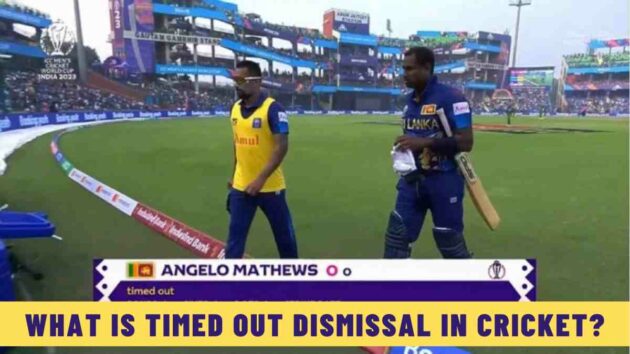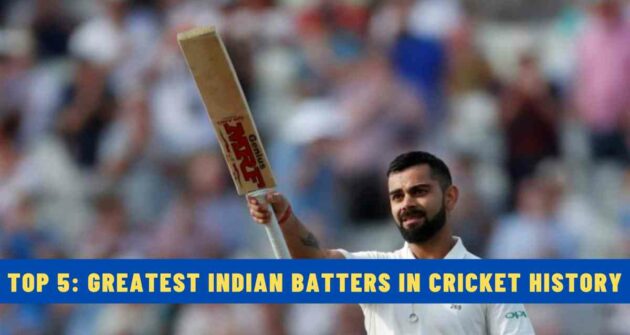Cricket, often referred to as a gentleman’s game, is known for its rich traditions, elaborate rules, and unique modes of dismissals. One such rare mode of dismissal is “timed out.”
Unlike more common dismissals like bowled, caught, or LBW (leg before wicket), being timed out is less frequently seen on the cricket field.
This article delves into the intricacies of the timed out dismissal, covering its occurrence, the rules governing it, and its history in the annals of cricket.
Table of Contents
What is a Timed Out Dismissal?
A “timed out” dismissal occurs when a new batsman fails to take his position at the crease within a stipulated time after the previous batter has been dismissed.
This rule ensures that the game proceeds at a steady pace and prevents unnecessary delays. The concept of timed out is grounded in the spirit of keeping the game moving and maintaining its flow.
Rules Regarding Timed Out Dismissal
According to the Laws of Cricket, governed by the Marylebone Cricket Club (MCC), Law 40 specifies the circumstances under which a batter can be timed out. The key points include:
Time Limit: A new batter must be ready to face the next delivery within three minutes of the previous batter being dismissed. In some formats and specific playing conditions, this time limit can be reduced, such as in shorter formats like T20 cricket, where the time limit might be shorter to keep up with the fast pace of the game.
Appeal: The fielding team must appeal to the umpire for a timed out dismissal to be granted. The onus is on the fielding team to notice the delay and make a formal appeal.
Umpire’s Decision: If the umpire is satisfied that the incoming batter has not reached the crease in the allotted time and there was no reasonable excuse for the delay, the batter can be given out by the rule of timed out.
Exceptions: There can be exceptions for external reasons, such as an injury to the incoming batsman or other unavoidable circumstances. In such cases, the umpires may exercise their discretion.
Historical Context and Occurrences
The timed out dismissal is one of the rarest in cricket. Since its formal inclusion in the Laws of Cricket, there have been only a handful of instances at the professional level.
Early Instances
The concept of timed out was introduced to the Laws of Cricket in the late 20th century. However, it wasn’t until 1980 that the first known instance of a timed out dismissal occurred in a professional match. In a domestic match in South Africa, Andrew Jordaan was the first batsman to be dismissed in this manner.
Notable Occurrences at International Level
India vs. Pakistan (1997): One of the more famous instances of a timed out dismissal occurred in 1997 during a Sahara Cup match between India and Pakistan in Toronto. Pakistani batsman Inzamam-ul-Haq was the player in question, but the appeal was withdrawn as it was deemed against the spirit of the game.
Somerset vs. Sussex (2003): In an English County Championship match, Somerset’s batsman Alex Barrow was given out by the timed out rule. This case highlighted the strict enforcement of the rule, even in domestic cricket.
Sri Lanka vs. India (2004): Another instance in a high-profile match occurred when Sri Lankan batsman Marvan Atapattu was involved. However, the appeal was not upheld.
Glamorgan vs. Durham (2015): Michael Carberry, playing for Hampshire, was involved in a timed out dismissal in a County Championship match against Durham. This instance underscored the rule’s application in modern cricket.
Sri Lanka vs. Bangladesh (2023): The former captain of the Sri Lankan team, Angelo Mathews, exceeded the two-minute limit to take his position at the crease, prompting opposition skipper Shakib Al Hasan to appeal, which the on-field umpire upheld. (Watch here.)
There have been instances where the timed out rule has sparked controversy. In some cases, fielding teams have been criticised for not adhering to the spirit of the game by making appeals. Conversely, there have been debates about batsmen taking undue advantage of the time allowed.
Impact on the Game
The timed out dismissal, though rare, has a significant impact on the game. It serves as a deterrent against time-wasting tactics by the batting side.
By imposing a strict time limit, the rule ensures that the game flows smoothly and maintains its pace, especially in limited-overs formats where over rates are closely monitored.
Evolution and Modern Context
The advent of T20 cricket and the increasing emphasis on maintaining over rates have brought the timed out rule into sharper focus. With the game becoming faster and more commercialised, there is less tolerance for delays.
The International Cricket Council (ICC) has also taken measures to ensure that teams adhere to over rate requirements, with penalties imposed for slow over rates.
In recent years, there have been discussions about refining the rule to adapt to modern-day cricket’s demands. Some suggestions include reducing the time limit further in shorter formats and introducing technological aids to monitor the time taken for a new batsman to arrive at the crease.
Conclusion about Timed Out Rule
The timed out dismissal, though infrequent, is a fascinating aspect of cricket’s complex rulebook. It underscores the importance of time management in the game and serves as a reminder of cricket’s unique blend of tradition and modernity.
As the game continues to evolve, the timed out rule will remain a crucial component in ensuring that the spirit and pace of cricket are preserved. Whether in historic test matches or fast-paced T20s, the essence of being timed out lies in maintaining the delicate balance between fair play and competitive edge.
Read Next | Concussion Substitute Rule in Cricket – Explained











